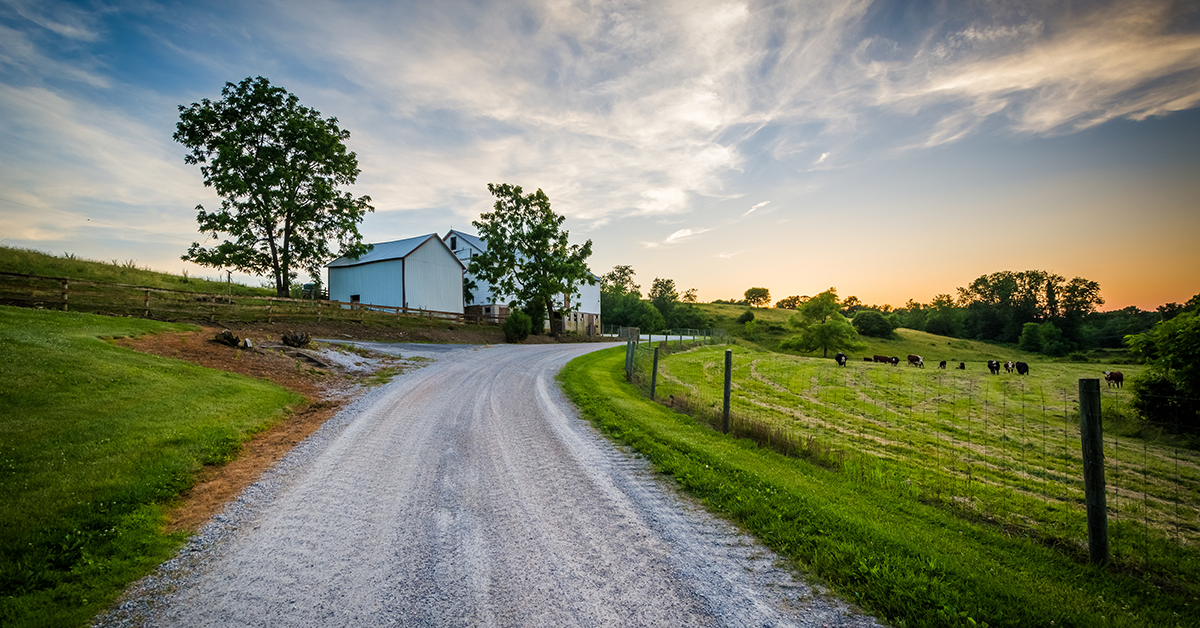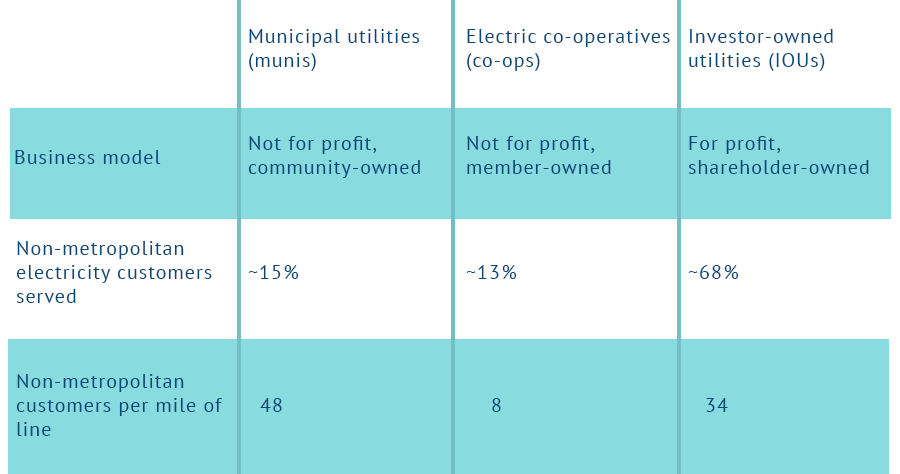Our 2025 Sustainability Report is here! Dive in.
How to Bring Energy Efficiency to Remote Rural Communities
October 7, 2019 •Franklin Energy

The sheer distances involved in reaching remote rural and small-town communities make their energy needs unique, which creates special challenges for utilities in less urban areas.
Fuel use patterns are different, for a start. Natural gas is the usual heating fuel in urban areas, but it’s far less common for rural households, because building distribution infrastructure across such extensive, sparsely populated areas is so expensive. Instead, propane is the main heating fuel for 90 percent of rural homes in the Midwest.
The organizations providing energy efficiency services to remote communities also differ from those in metropolitan areas. Small-town communities are typically served by small municipal utilities (munis), while 900-plus local electric distribution co-operatives (co-ops) serve rural regions across the United States.
Some larger investor-owned utilities (IOUs) serve both rural and urban areas and offer the same programs to all their customers, which means they theoretically offer energy efficiency services in rural areas. But because of the high costs of provision in areas with low population density, many IOUs tend to serve their urban customers more readily.

Whatever the type of utility, providing cost-effective efficiency services for rural communities clearly requires careful planning to tackle the particular challenges of their unique geography.
What geographical challenges do program implementers face?
The fundamental problem that rural utilities face is low population density.
Rural housing stock is geographically spread over large distances—and, incidentally, primarily composed of manufactured houses and larger, single-family homes, predating 1980 building codes.
Email this blog to a colleague!
Because rural populations are so dispersed and remote, utilities serve fewer customers per mile of line (take a look at the table above to appreciate the scale of the problem for electric co-ops in particular). For example, the service territory of Co-Mo Electric, a co-op in Missouri, includes 2,300 square miles of rural communities.
And of course, program implementers also face colossal labor costs when contractors need to visit remote rural locations to install efficiency measures, because of the long driving distances.
visit remote rural locations to install efficiency measures, because of the long driving distances.
All this inevitably makes it very difficult for rural efficiency program designers to keep per capita delivery costs low.
Larger IOUs can mitigate the problem by spreading overhead costs across multiple job sites. But for smaller co-ops and munis, where admin and labor costs are spread over fewer customers and smaller energy savings, program implementation is bound to be more expensive.
How can program implementers step up to the challenge?
One thing is certain—when it comes to energy efficiency programs, what works in the city will not work effectively out across the countryside. So, savvy implementers are designing specific rural-targeted programs, distinct from offerings aimed at metropolitan customers.
Indeed, many states are now helping to drive rural efficiency investments by offering incentives for utilities to serve rural areas specifically. Several states have also adopted legislation, regulation or commission orders that provide energy savings goals and efficiency spending targets for low-income or hard-to-reach customers, which can include those in rural communities.
IOUs must meet strict cost-effectiveness standards, because they’re typically funded by ratepayers. In several states, low-income programs are exempt from cost-effectiveness tests—if rural programs were also exempt (because rural customers are hard to reach and expensive to serve), it would encourage more implementers to pursue them.
Bundling energy efficiency with renewables or water efficiency within one program brings extra value to customers. By bundling deeper energy efficiency measures like refrigeration with lower-cost measures such as lighting, program developers can help balance cost and energy savings. In fact, when it comes to bundling, there’s an added benefit: when several measures are packaged together, contractors are able to make multiple energy-saving improvements on the same visit to a remote customer site. This reduces travel expenses and the need to return.
On a similar note, direct install packages can also help keep costs down, encourage program participation and provide extra value for customers. These involve a pre-approved set of measures that contractors can install right away, even if the original customer visit was just for an audit, rather than having to schedule another trip.
Key Takeaway
It’s undeniably difficult to scale efficiency programs for rural areas and keep them cost effective when customers are so widely dispersed. But with state-driven incentives, energy savings goals, and programs tailored to the unique needs of rural households, businesses and farms, implementers are starting to deliver efficiency services in a cost-effective and impactful way.
To learn more about our unique approach to saving your customers energy and money, schedule a meeting with an expert today!

